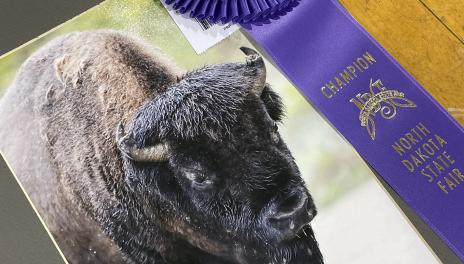4-H Ribbons Help Youth Improve Goal-setting and Evaluation
The 4-H motto, To Make the Best Better, requires youth to engage evaluation skills to discover where they are and how well they are doing. 4-H’ers learn how to evaluate and gain feedback on their efforts by entering projects in county fairs and achievement days.
4-H uses the Danish system of evaluation to evaluate 4-H projects relative to the standards developed for each class, show or contest. The system does not evaluate participants against other participants. Each project earns a white, red or blue ribbon based on how well the project meets the average standard, but the focus at each level is on what the youth has accomplished and how they can challenge themselves in the future.
Leigh Ann Skurupey, director for the Center for 4-H Youth Development, reminds 4-H leaders and judges that the “best” 4-H is trying to make better is the young people involved in 4-H.
“In 4-H, we target the learning process as a way to help young people build essential life skills to grow, lead and thrive,” she says. “As a result, we are helping young people to achieve the best in themselves to reach their full potential.”
She explains that the items exhibited at fairs are not the end goal and do not illustrate all the learning that takes place in a 4-H project. As youth participate in 4-H projects, they develop skills, gain knowledge and build confidence. The judging experience helps to foster a positive growth mindset and skills for evaluation and goal setting.
“Through the process of planning, creating and exhibiting projects for judging, young people develop key life skills and explore careers,” Skurupey says. “While no evaluation system is perfect, the Danish system helps 4-H develop top-quality youth instead of focusing on blue ribbon projects.”
MORE INFORMATION:
North Dakota 4-H Youth Development Projects Webpage
Leigh Ann Skurupey, 701-231-7253, leighann.skurupey@ndsu.edu
